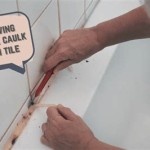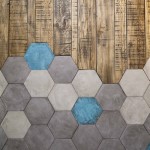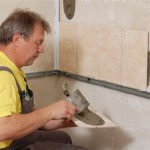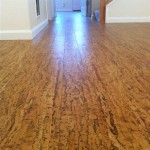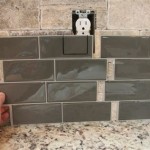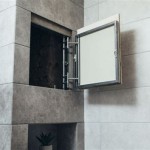Can You Put Tile On Cement Board?
Cement board, also known as cement backer board, is a popular substrate for tiling in various applications, including bathroom showers, kitchen backsplashes, and floors. Its durability, moisture resistance, and stability make it an ideal choice for areas prone to moisture and wear. But can you actually put tile directly onto cement board, or are there specific considerations?
The answer is yes, you can directly tile onto cement board. However, it's crucial to follow proper installation techniques to ensure a successful and long-lasting tiled surface. This article discusses the advantages of using cement board as a substrate for tiles, explores the steps involved in tiling on cement board, and addresses some common concerns regarding this process.
Advantages of Using Cement Board for Tiling
Cement board offers several advantages over other substrates, making it a preferred choice for tiling projects. Here are some key benefits:
- Moisture Resistance: Cement board is highly resistant to moisture, making it suitable for wet areas like bathrooms and kitchens. It can withstand water exposure without warping, rotting, or degrading.
- Durability: Cement board is extremely strong and durable, capable of withstanding heavy foot traffic and impact without cracking or breaking. This makes it an ideal substrate for high-traffic areas.
- Stability: Cement board provides a stable and flat surface for tile installation. It minimizes the risk of tiles cracking or loosening over time due to movement or uneven surfaces.
- Fire Resistance: Cement board is fire-resistant, offering additional safety in case of a fire. This is particularly beneficial in kitchens and other areas with potential fire hazards.
Steps for Tiling on Cement Board
Tiling on cement board involves several steps that must be performed correctly for optimal results. Following these detailed steps ensure a smooth, durable, and aesthetically pleasing tiled surface:
1. Prepare the Surface
Before installing cement board, ensure the underlying surface is clean, dry, and level. This step is crucial for proper adhesion and prevents unevenness in the finished tile installation. If necessary, use leveling compound to create a smooth and flat surface.
2. Attach Cement Board
Secure the cement board to the substrate using screws or adhesive. Ensure that the screws are long enough to penetrate the underlying structure. Using galvanized or stainless steel screws is recommended for moisture resistance. For adhesive, use a construction adhesive specifically designed for cement board.
3. Seal the Joints
After installing the cement board, seal the joints between the boards with a waterproof sealant. This prevents moisture from penetrating the substrate and causing damage. Use a high-quality sealant designed for use with cement board.
4. Apply Mortar
Apply a thin layer of thin-set mortar to the cement board surface. This mortar serves as a bonding agent between the tile and the substrate. Use a notched trowel to create even ridges in the mortar, ensuring proper adhesion.
5. Install Tiles
Carefully place the tiles on the mortar bed, ensuring they are level and spaced correctly. Use tile spacers to maintain consistent grout lines. Lightly tap the tiles into place to ensure they are firmly seated.
6. Grout
After the mortar has cured, apply grout to fill the gaps between the tiles. Use a grout float to spread the grout evenly and wipe away excess material. Allow the grout to dry completely before cleaning the tiles.
7. Seal the Grout
To protect the grout from staining and moisture, apply a sealant specifically designed for grout. This sealant will create a protective barrier, making it easier to maintain the tiled surface.
Common Concerns about Tiling on Cement Board
While cement board offers many advantages, there are a few potential concerns that may arise during tile installation. Here are some frequently asked questions and their solutions:
1. Is Cement Board Waterproof?
Cement board is highly moisture resistant, but it is not entirely waterproof. It is crucial to seal the joints properly to prevent water penetration and damage. Using waterproof thin-set mortar and a sealant on the grout will further enhance moisture resistance.
2. Can I Use Regular Mortar on Cement Board?
While traditional mortar can be used on cement board, thin-set mortar is recommended for optimal adhesion. Thin-set mortar is specifically designed for tile installation and provides a stronger bond. It also allows for a thinner mortar bed, reducing the potential for tile slippage.
3. Can I Install Tiles Directly on Cement Board Without Mortar?
It is not recommended to install tiles directly on cement board without mortar. The lack of a bonding agent between the tile and the substrate can lead to weak adhesion, resulting in tile loosening or cracking over time.
In conclusion, understanding the advantages and potential concerns of using cement board for tile installation is crucial for achieving a successful and long-lasting tiled surface. By following the steps outlined above, you can ensure a durable and aesthetically pleasing tiled finish in any area of your home.

Tile Backerboard Material Options Fine Homebuilding

Easily Install Cement Board To Prep For Tile Installation

How To Install Cement Board The Home Depot

How To Install Cement Board For Tile Projects Diy Family Handyman

How To Install Hardiebacker Cement Board On Floors James Hardie Pros

How To Install Cement Board The Home Depot

How To Install Cement Board On A Floor Diy Family Handyman

Installing Cement Backerboard For Tile Flooring Hometips

Tile Installers Select Hardiebacker Cement Board As Most Preferred Brand 2024 02 22 Stone World

Tile Installation Backer Board Around A Bathtub Family Handyman
Related Posts

